Many dogs are happy to wag their tails at everything, never fearing the moment when you walk out the door.
Other dogs suffer from anxiety, including separation anxiety, and have trouble coping when you’re not around. Still others may be destructive chewers or pace the house, even when you are home.
For these dogs, anxiety management is paramount.
High levels of stress can increase the amount of the steroid hormone cortisol pumping through your dog’s bloodstream, which can cause pretty rotten effects such as immunosuppression and metabolic abnormalities.
We’ll talk about Xanax — one of the medications often used to treat canine anxiety — below. We’ll also identify a few other anxiety-management strategies that are often effective.
Read on to learn more!
Xanax for Dogs: Key Takeaways
- Alprazolam (brand name Xanax) is a human medication that’s sometimes prescribed by vets in an off-label manner (such as for dogs).
- Most dogs tolerate alprazolam well, but it can cause side effects, such as sedation or incoordination.
- There are a number of other medications, supplements, and management strategies that can treat anxiety, ranging from CBD supplements to tight-fighting garments.
What Is Xanax?
Alprazolam is more commonly known as Xanax, which is the trademarked name for the medication. Regardless of what you call it, alprazolam is a type of medication known as a benzodiazepine tranquilizer.
Alprazolam is a schedule IV controlled drug, so your veterinarian will only prescribe it if the use of the medication is appropriate and outweighs the possible abuse potential.
While alprazolam has been used for many years, the exact way it works remains unknown.
But we do know that it depresses activity in certain areas of the brain, which helps it treat disorders such as anxiety.
An important thing to keep in mind is that alprazolam is prescribed off-label or extra-label when used to treat dogs, which means it is not being used as its original label specifies.
Many prescriptions are off-label in veterinary medicine because they were originally developed for use in people, not animals.
While alprazolam is related to diazepam, also known by the drug name Valium, the former lasts longer than the latter in dogs.
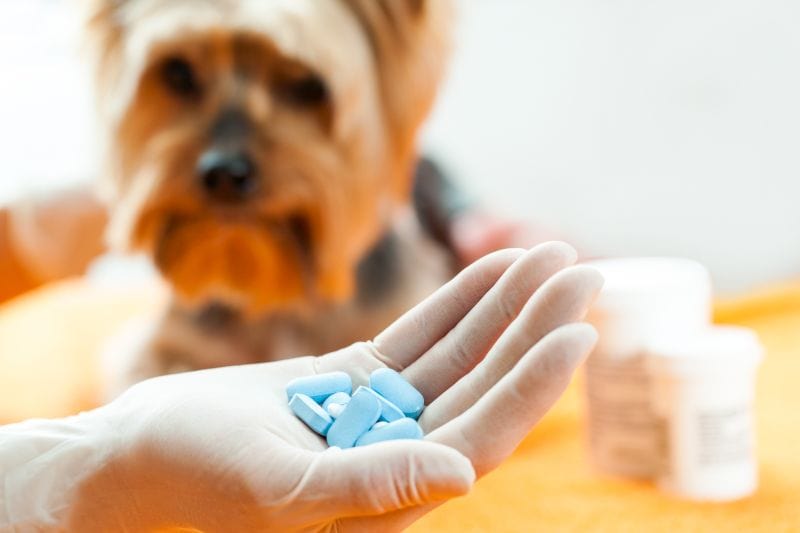
What Conditions Does Xanax Treat in Dogs?
There are several conditions that Xanax treats, namely anxiety.
Alprazolam has three main contexts for its use:
- As a preventative medication for anxiety-causing situations, such as a pet with storm or firework phobia.
- To intervene or treat situational anxiety-causing situations, such as a pet who gets nervous going to the vet or has separation anxiety.
- To treat a pet that is already stressed or panicking about a situation, such as a dog pacing the floors while a thunderstorm rages outside.
Alprazolam is also sometimes used in other situations, such as to help prevent seizure activity or as a muscle relaxer. However, resolving anxiety is the most common use.
Side Effects of Xanax for Dogs
Alprazolam tends to be well-tolerated but may cause sedation and incoordination.
In rare circumstances, dogs have paradoxical excitement, which just means that rather than sedation, the medication causes agitation or even aggression.
Typically any side effects your pet experiences will be gone in less than 24 hours, but be sure to contact your veterinarian if you have any questions.

Alprazolam is contraindicated if your pet has experienced paradoxical excitement with it before or has a history of aggression, which could be exacerbated by the medication.
It also needs to be used in caution with pets that are pregnant, lactating, or who have pre-existing medical issues, such as liver or kidney disease.
Alprazolam may interact with other medications, such as certain anti-depressants, antacids, and anti-hypertensive medications, among others. So, be sure to speak to your veterinarian about any medications your pet is on before starting them on alprazolam.
Xanax Dosage for Dogs
Follow your veterinarian’s advice and directions if they prescribe alprazolam.
The typical dosage for dogs is 0.01 to 0.1 milligrams per kilogram (mg/kg) of your dog’s body weight. Dogs should never take more than 4 mg in a single day, regardless of their size.
Alprazolam or Xanax comes in tablets and an oral suspension (liquid). Your veterinarian may consider having your dog’s alprazolam compounded (custom-formulated) to include flavors, if you have a finicky dog that doesn’t seem to like the normal taste of the medication or generally doesn’t accept medication easily.
Alternatives to Xanax for Dogs
Because Xanax for dogs does have potential risks and is an off-label and controlled drug, veterinarians often suggest other methods of treating anxiety in dogs — at least at the outset.
A few of the most common Xanax alternatives for dogs include:
CBD and Other Calming Supplements
CBD (short for cannabidiol, one of the active ingredients in Cannabis plants) is receiving a lot of attention in the media, although we are still learning a great deal about the drug.
CBD is commonly used with pets suffering from disorders such as anxiety and seizures, although individual products can vary in their effectiveness. CBD appears to be very well-tolerated in dogs, with the main side effect being the development of diarrhea.
There are also a litany of other canine calming supplements available on the market. These use a variety of different active ingredients, so be sure to discuss them with your vet first.
Other Prescription Medications
Other prescription medications may be used to treat dog anxiety, such as fluoxetine, which is more commonly known as Prozac.
These types of drugs are often used in conjunction with behavioral modification to regulate your dog’s behavior.

Phermones
Pheromones may also be recommended to treat your dog’s anxiety.
Dog-appeasing pheromone, such as in products like Adaptil spray, has been studied and shown to improve separation anxiety in many dogs.
Tight-Fitting Garments
Similarly to how babies respond better to being swaddled, many dogs show reduced anxiety when wearing snug-fitting garments, such as the Thunder Shirt.
These products can be expensive and may be hard to fit on your pet without the ability to try them on, so consider attempting to make your own dog Thundershirt.
Management Strategies
Management strategies designed to address your dog’s anxiety may be significantly beneficial for your pet.
Providing your furry family member with a safe space that he can call his own goes a long way towards reducing anxiety, such as making sure he has a dark, secure crate.
Provide More Exercise
Increasing your dog’s exercise can wear him out and increase the release of endorphins, which will naturally help him feel better.
You might also enjoy similar benefits when you take your dog out for a walk — so get outside with your pooch!

Work with a Behaviorist
Your veterinarian may also recommend that you make an appointment with a local canine veterinary behaviorist.
These specialists can work with you and your dog to manage situations that trigger anxiety and appropriately treat them, often with the help of a combination of medications, behavioral modification, and garments or pheromones.
***
Alprazolam is often used off-label in dogs but may decrease your dog’s anxiety levels, particularly in situational anxiety, such as storm phobia or separation anxiety.
The major downside to this medication is its abuse potential, so it should be secured away when not directly being given to your dog.
Has your vet ever prescribed Xanax for your dog? How did it work out? Did your dog seem to be able to relax a bit more after taking the medication?
Let us know your experiences in the comments below!
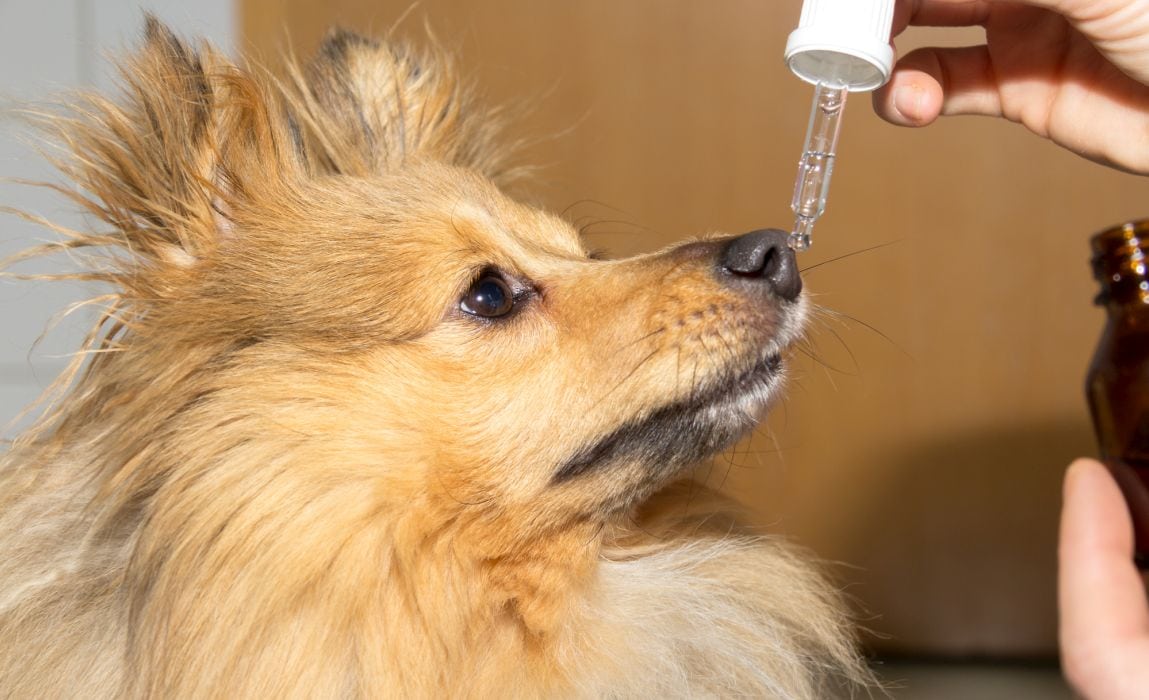

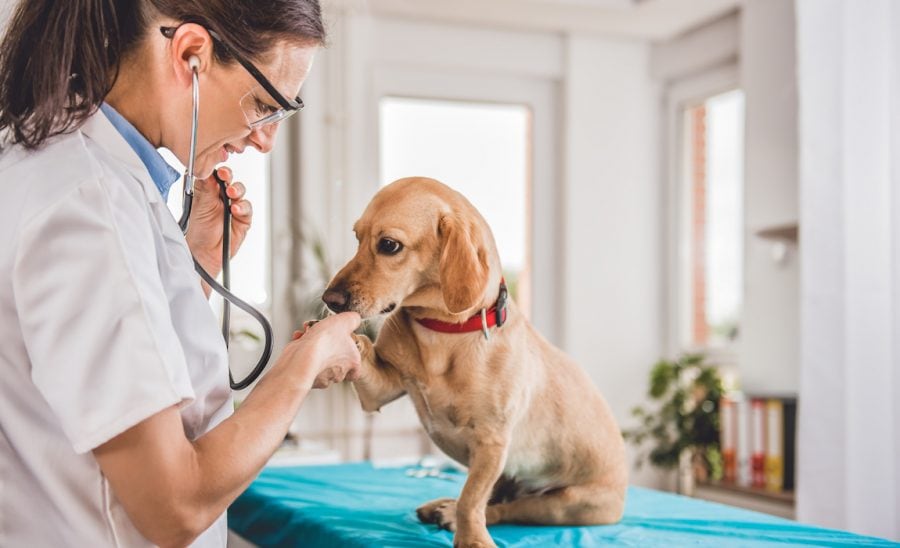





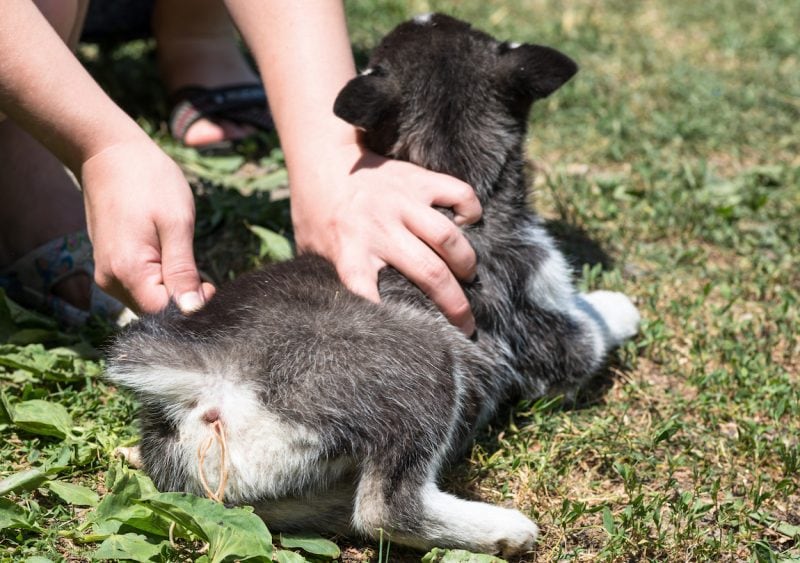


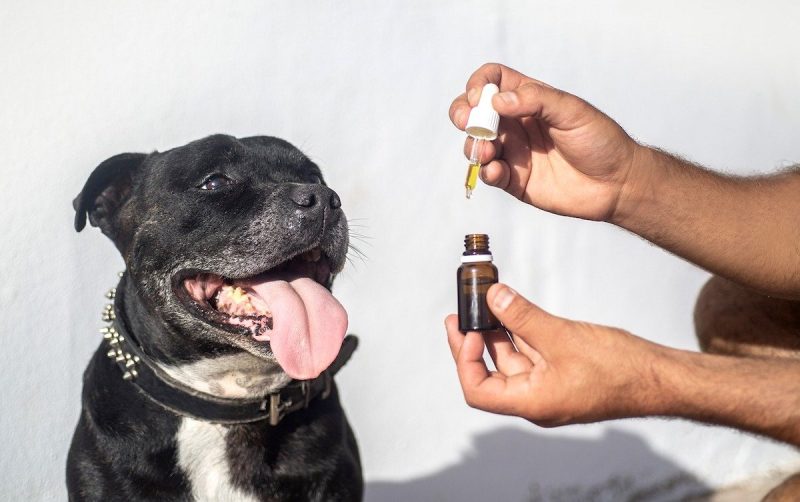

Leave a Comment